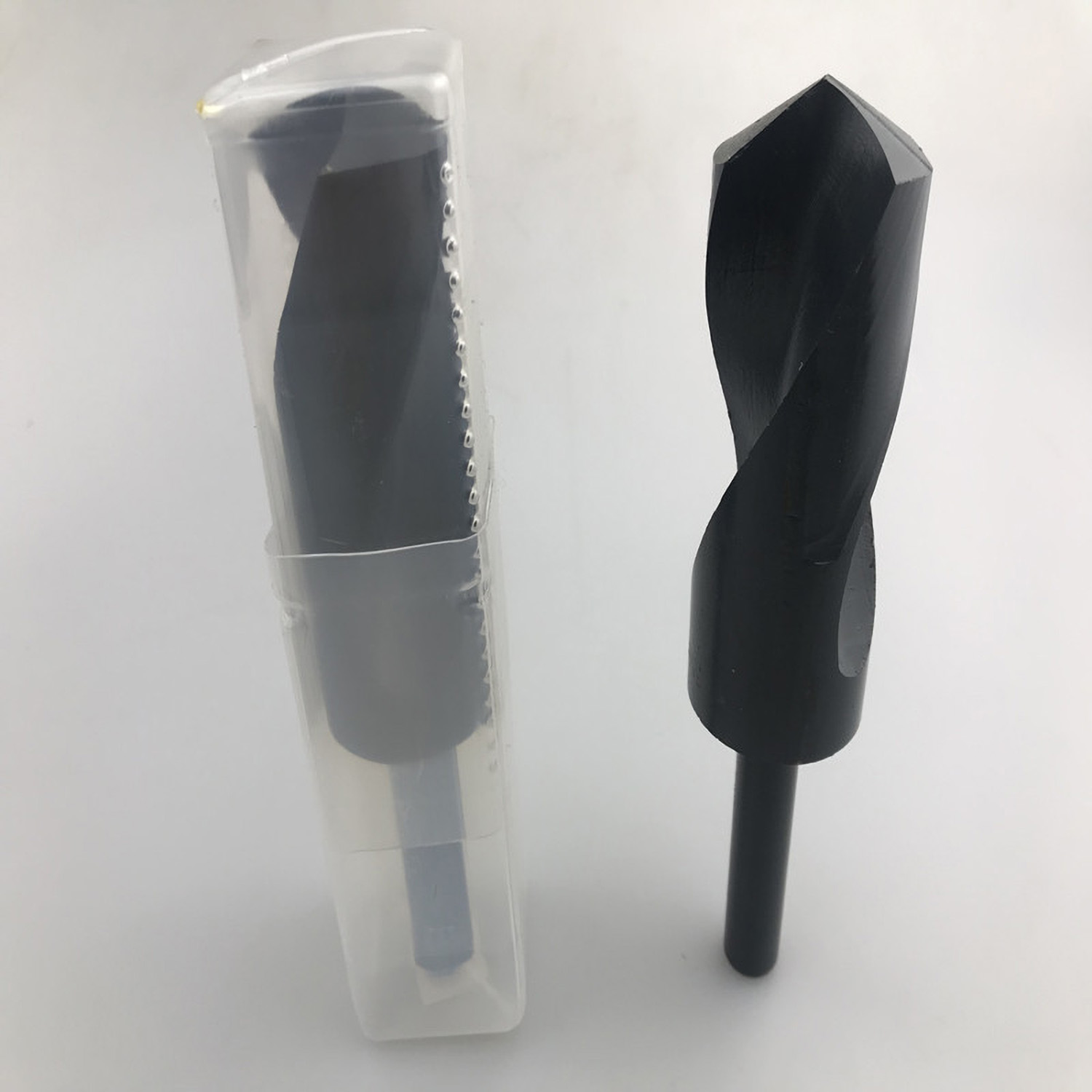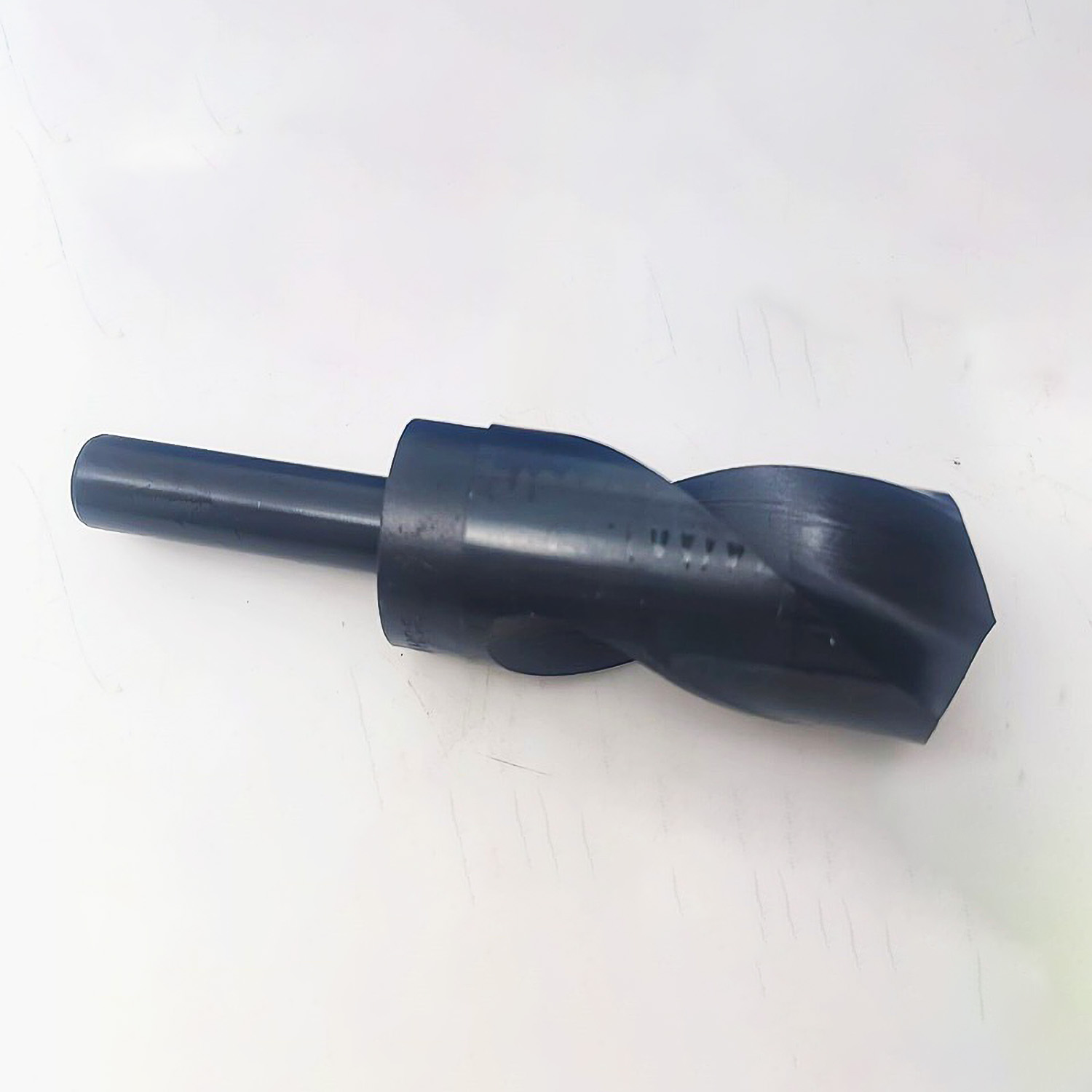In the dynamic world of metalworking and material processing, precision, versatility, and tool longevity are non-negotiable. The HSS 4241 Reduced Shank Twist Drill series emerges as a groundbreaking solution engineered to tackle diverse materials—from cast iron and aluminum alloys to wood and plastics—with unmatched efficiency. Featuring a specialized reduced shank design and advanced heat resistance, these drill bits are redefining expectations for both industrial workshops and DIY enthusiasts.
Innovative Design: The Power of Reduced Shank Geometry
At the core of this tool’s brilliance lies its reduced shank configuration, a structural innovation that sets it apart from conventional twist drills. Unlike standard straight shank bits, the reduced shank features a stepped-down diameter at the base, allowing compatibility with smaller chuck sizes (typically 13–60mm drilling capacity) while maintaining a larger cutting diameter. This design breakthrough enables users to drill larger holes without upgrading their equipment—ideal for workshops juggling multi-scale projects.
The spiral flute geometry, optimized with 2–3 grooves, ensures rapid chip evacuation even in deep drilling applications. For cast iron and aluminum alloys—materials prone to clogging—the flutes’ helical angle prevents chip packing, reducing heat buildup and minimizing workpiece damage. A 135° split-point tip further enhances accuracy by eliminating “walking” during initial contact, ensuring clean, burr-free holes.
Material Mastery: HSS 4241’s Edge in Extreme Conditions
Crafted from high-speed steel grade 4241, these drills undergo precision heat treatment to achieve a hardness of HRC 63–65, striking a balance between toughness and wear resistance. The advanced alloy composition grants exceptional thermal stability, resisting tempering effects even at temperatures exceeding 600°C. For users drilling abrasive materials like stainless steel or fiber-reinforced plastics, this translates to 3x longer tool life compared to conventional HSS drills.
A critical innovation is the integration of TiN (Titanium Nitride) coating on select models. This gold-colored layer slashes friction by 40%, enabling higher RPMs without compromising edge integrity. Combined with mandatory coolant application (water or cutting fluid), the coating acts as a thermal barrier, preventing edge chipping and workpiece hardening—a common issue in dry drilling scenarios.
Multi-Material Versatility: From Foundries to Home Workshops
The HSS 4241 Reduced Shank series thrives across industries due to its cross-material adaptability:
Metalworking: Effortlessly penetrates cast iron, carbon steel, and non-ferrous metals like aluminum.
Composites & Plastics: Delivers splinter-free exits in acrylics and laminates with its razor-sharp edges.
Woodworking: Outperforms standard wood bits in dense hardwoods, thanks to superior heat dissipation.
Compatible with hand drills, bench drills, and CNC machinery, these bits democratize precision. Automotive repair shops, for instance, leverage their reduced shank to drill oversized bolt holes using compact cordless drills, while aerospace manufacturers deploy them in CNC setups for repeatable, high-tolerance drilling.
For high-volume production lines, this equates to 15% lower operational costs and 25% fewer tool changeovers. DIY users benefit from reduced wobble in handheld operations, ensuring professional-grade results even in off-axis drilling.
Coolant-Centric Operation: A Non-Negotiable Protocol
While the HSS 4241’s thermal resilience is exceptional, manufacturers emphasize coolant as a critical success factor. Dry drilling risks premature edge degradation, particularly in metals with low thermal conductivity (e.g., titanium). Users are advised to:
Apply water-soluble oil or cutting fluid continuously.
Maintain a feed rate of 0.1–0.3mm/rev to avoid friction spikes.
Retract periodically during deep drilling to clear chips and recool.
Future-Proofing Manufacturing: The Road Ahead
As Industry 4.0 accelerates, the HSS 4241 series is evolving with IoT-enabled features. QR codes on packaging now link to real-time drilling parameter calculators, while partnerships with coolant brands offer customized fluid blends for niche materials. Market analysts project a 12% CAGR in the reduced shank segment, driven by demand for retrofittable, cost-effective tooling solutions.
Conclusion
The HSS 4241 Reduced Shank Twist Drill isn’t merely a tool—it’s a paradigm shift. By merging material science with ergonomic design, it empowers
Post time: Apr-21-2025




